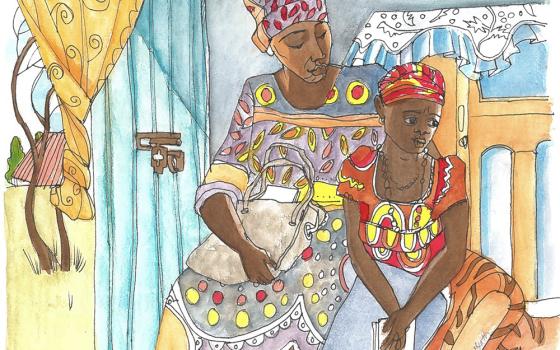Among the many themes that emerge or converge in the films of director/ producer/writer Steven Spielberg are lonely children and war, specifically World War II.
These themes can be found in the kids in "E.T.: the Extra-Terrestrial" (1982) as well as the Oscar-winning "Schindler's List" (1993), in which viewers may remember the little Jewish girl in a red coat, waiting for transport to the Nazi death camps. They can be found in "The Color Purple" (1985) (for which Spielberg deserved an Oscar) and one of my personal favorites, this year's "Super 8," where Spielberg captures children who are lonely or estranged from or in tension with their fathers.
I n his films "Saving Private Ryan" (1998) and "Letters from Iwo Jima" (2006) and in his TV miniseries "Band of Brothers" (2001) and "The Pacific" (2010), Spielberg draws the heartbreak of war with the pen of cinematic art as few others, perhaps none others, ever have. But I think with "War Horse," which opened in theaters Christmas Day, is Spielberg's take on the Academy Award-winning 2009 film "The Hurt Locker." It's his chance to show how war shreds humanity through the desperate courage and pain of a war horse. It is estimated that millions of horses died in World War I from all the armies involved.
n his films "Saving Private Ryan" (1998) and "Letters from Iwo Jima" (2006) and in his TV miniseries "Band of Brothers" (2001) and "The Pacific" (2010), Spielberg draws the heartbreak of war with the pen of cinematic art as few others, perhaps none others, ever have. But I think with "War Horse," which opened in theaters Christmas Day, is Spielberg's take on the Academy Award-winning 2009 film "The Hurt Locker." It's his chance to show how war shreds humanity through the desperate courage and pain of a war horse. It is estimated that millions of horses died in World War I from all the armies involved.
"War Horse" is based on based on a 1982 children's novel by Michael Morpurgo. It was made into a 2007 stage play that friends told me is extremely moving.
A few months before England declared war on Germany in 1914, a horse is born in Devon. Albert Narracott (Jeremy Divine), the only son of tenant farmers Ted (Peter Mullan) and Rose (Emily Watson), goes to market to buy a workhorse, presumably a Clydesdale, but is enthralled with the strength and beauty of Joey. He spends money he does not have and takes the horse home, to the derision and disapproval of all except Albert.
Joey proves his worth by plowing an impossibly rocky field, but the crop is lost in a rainstorm. When war is declared, soldiers come to the village to buy horses, and an officer promises Albert he will bring Joey home safely if he can.
Joey heads into war with the British soldiers, is lost to the Germans, taken in by a French farmer and his granddaughter and eventually ends up working the German transport lines with Topthorn, a black stallion also captured from the British army.
As the longest, most deadly war in history nears the end, Joey escapes from his cruel masters, and in a heartbreaking sequence, wrapped in barbed wire, cut and bleeding, makes a run for it through no man's land. This is the film's finest, most poignant, terrifying scene, which culminates with Germans and British units recognizing the transcendent strength of this noble steed that changes them all, just for a moment.
There are elements of the film that won't pass muster to the careful viewer. The crop that gets ruined is on a slope: My sister, who has a large garden, said the rain would have run off, not drowned the vegetables. The crookedly plowed field turns into the perfectly furrowed plot from one scene to another. Albert, who eventually is old enough to go to war, is blinded by gas, but suddenly he can see -- but the audience does not get to see that moment. I wanted to see this because the characters were not well-developed; the one with the most interesting potential was Rose, played by Emily Watson.
The film has been nominated for many awards for Janusz Kaminski's cinematography, that magical craft of bringing light and camera together. Kaminski has worked on many Spielberg movies, winning Oscars for "Schindler's List" and "Saving Private Ryan." But I found the digital color "filming" to be oversaturated, making the characters seem almost as if they were motion-capture animation. Some of the staging of the scenes seemed to have been lifted right out of "Gone with the Wind" and "The Searchers." The story is less complex than the huge 3-D production the movie turns out to be.
In the end, "War Horse" is about war, and it is about the ways that animals can teach us to be more human. It's too long, but it is inspiring. The horses, of which several were used for both Joey and Topthorn, will astonish you.
Everything in the film is true, and some of it did happen.



